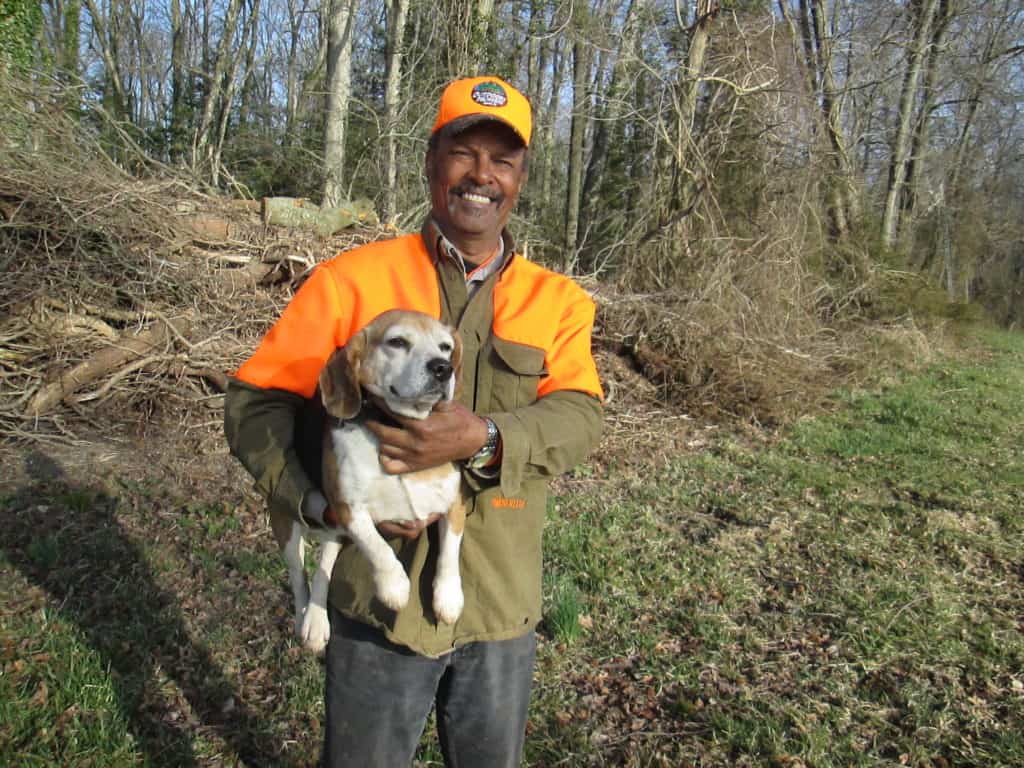Sporting Life
Release the Hounds
By Dennis Doyle
This year’s rabbit season ended a month ago, and already my friend Charles Rodney has been hard at work reworking his six-dog beagle pack. A pack has long been the most efficient method of producing rabbits, more than a single dog or even a brace (two dogs). A pack is anywhere from four to 10 dogs, chosen for individual traits and conformity of overall performance.
Beagles are anywhere from 13- to 15-inches high at the shoulder, an important characteristic for those who maintain them. The dog’s height is a prime indicator of its speed. In a pack, a similar speed is essential if the dogs are to operate as a cohesive unit and a beagle pack is indeed a close cooperating group. The saying cover the whole pack with one blanket is often heard as a compliment of excellence in performance. Constant exposure to game and attention to each dog’s needs is paramount in maintaining a pack’s peak performance. A houndsman’s work is never done, it’s a year-round job.
Each dog in a pack has a specific role. Hank, a 10-year-old, tricolor (brown, black & white), is the leader and Sam his second-in-command, and also a tri at 5 years. They have the best noses and are also the wisest and most adept trackers. When either of these two dogs sounds off, the rest of the pack joins them immediately as there is certain to be game afoot. In beagle parlance they are known to have true mouths.
There is also Blue (a bluetick) and Buckshot (tricolor), ages 7 and 6 respectively. These dogs are talented in searching wider ground and finding rabbits that are holding in dense thickets, brush piles and downed trees. They will bay on old (cold) scent occasionally but are essential to the team in flushing rabbits out of difficult terrain into the open field for chase. The pack, all 13-inch dogs, are usually following the rabbit’s scent anywhere from 50 feet to 100 yards behind the galloping bunnies who are skilled at fooling the dogs thanks to their constant experiences with other predators.
The last two pups are Sammy and Shorty, both tricolors, the new kids, and one of the main reasons for beginning dog training so early after the past season. Sammy at 18 months has already been a contributing member of the pack, eager and comfortable in maintaining contact with the other dogs and lending his nose, voice and energy to the collective effort.
Shorty, the youngest member at 6 months, is already surprisingly successful in catching on to the game. And when a rabbit is actually sighted by the pack the merging of their suddenly excited, collective voices rivals any musical crescendo for those following. Enjoying a chase simply as an observer, I’ve often found, is every bit as enjoyable as participating in an actual hunt itself.
Now that we’re a far more urban population, beagles have become gradually relegated to more individual roles. Though still ranked high in popularity (sixth) as a pet because of its friendliness and charming character, the breed has recently also become noticed by our Border Patrol, Customs and Airport Security. Its diminutive presence is far less threatening than that of the German shepherd, Belgian Malinois or even the Labrador retriever. Illegal plants, prohibited food items and other controlled substances are pointed out to the authorities by the breed’s outstanding nose.
The classical sporting practices of the beagle pack, however, while definitely fading in urban areas due to the effort involved, continue to be enthusiastically honored by sporting stalwarts in our country’s more rural south. There are also, thankfully, a few sports-people in Maryland who remain thrilled and captivated by the musical sound of a chorus of baying hounds working out a complex scent trail through forest and field. I certainly am one of them.
*****
Fishfinder:
Long-term climate warming plus recent springtime heat waves have brought a cornucopia of new gamefish into high presence along the Chesapeake. Tarpon have been seen rolling under the Bay Bridge while trollers practicing for the opening day of Rockfish Trophy Season have had their reels spooled by 50-pound-plus yellowfin and bigeye tuna as well as large jack crevalle. Muskrats are again breaking in the mouth of the Choptank in large numbers and taking rigged topwater twigs, while pompano and mutton snapper have been delighting surf-rod anglers at Sandy Point and Matapeake Parks fishing bloodworms on the bottom. It’s a crazy world out there and you’d better hurry or you’ll miss out—and Happy April Fool’s Day!


